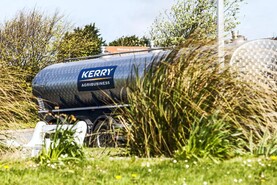With the good weather in the past few months, both in the autumn of 2018 and spring 2019, slurry spreading conditions were ideal in the majority of the country. Farmers could be forgiven for forgetting the dreaded spring of 2018 and the difficulties that many had with slurry storage capacity. Farms have pushed on over the past few years and while the burst of expansion may be over, steady expansion is still expected. One area that some farmers are still lacking in is slurry storage capacity.
Over the past seven years, dairy cow numbers have pushed up by 350,000 head. This would mean an increased slurry storage requirement of 450m gallons. The question is, have we constructed this extra storage within this time period?
We examine the different options that farmers have for increasing their slurry storage capacity. With more and more overground slurry stores being constructed, we look at the costs involved and what options are available. Back in 2008, when there was a 60% grant available to all applicants, hundreds of overground slurry stores were installed, while now this would be much less than 100. Could one option be to increase the grant-aid for slurry storage in particular?
Another issue is where the Department cannot give grant aid to a farmer if they do not already have sufficient storage for the livestock on their farm. This is a European directive and the Department says that there is little it can do, but the way the current system is, the farmers who need the storage most are the ones ineligible for grant aid.
Anecdotally, we are hearing that the numbers of farmers not completing projects through TAMS continues to rise – could TAMS be broadened out to include these otherwise ineligible farmers?
When it comes to slurry management, there are innovative solutions being developed and we also examine the recently launched Lely Discovery Collector in action for a 110-cow herd.






 This is a subscriber-only article
This is a subscriber-only article









SHARING OPTIONS: